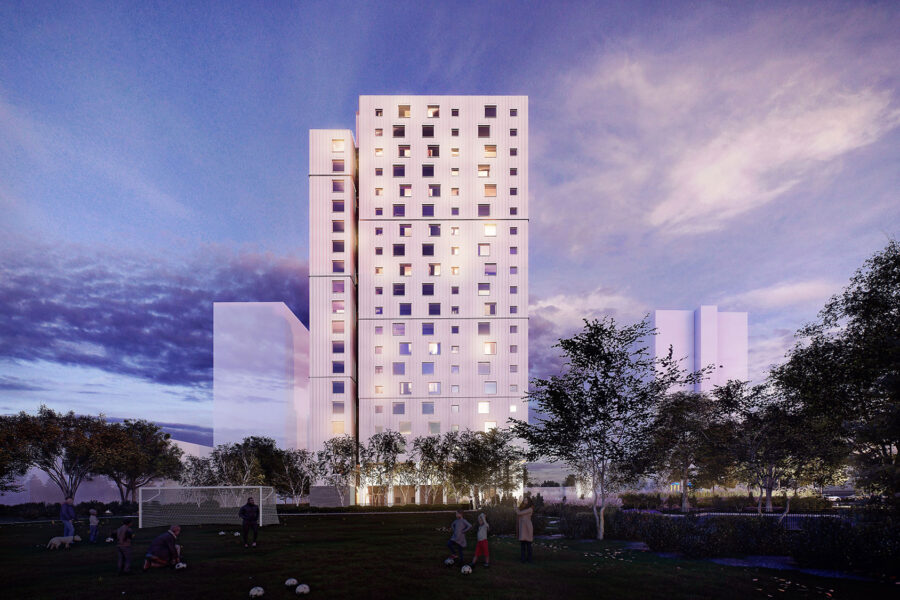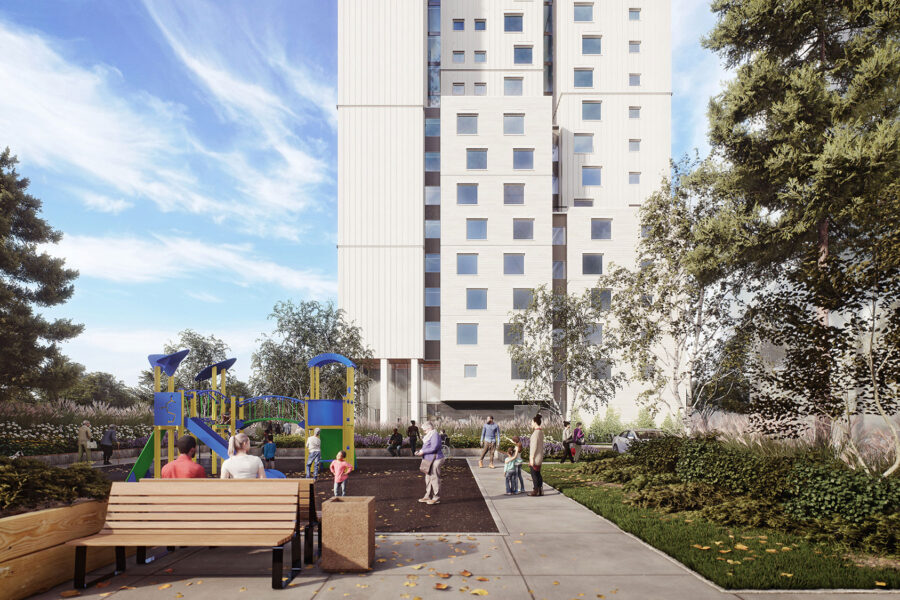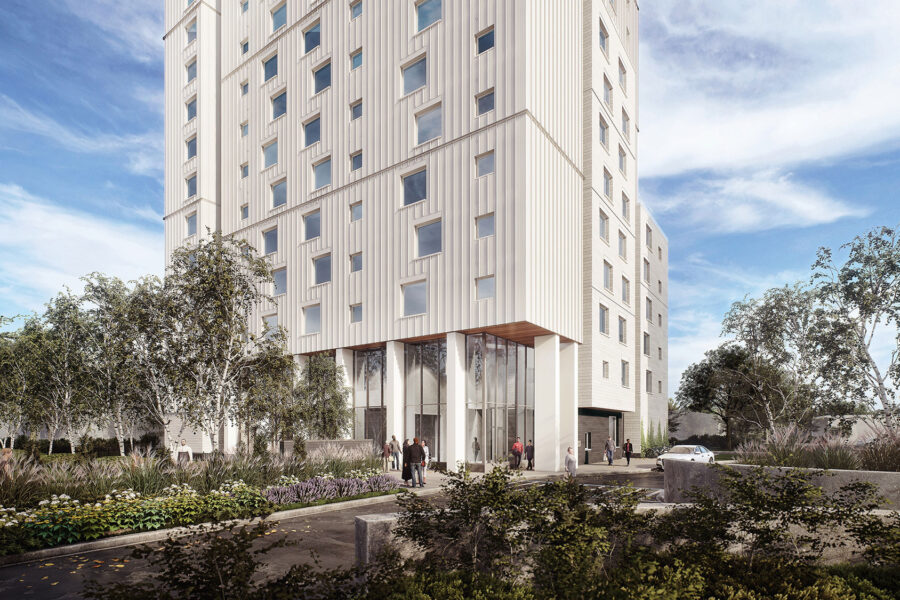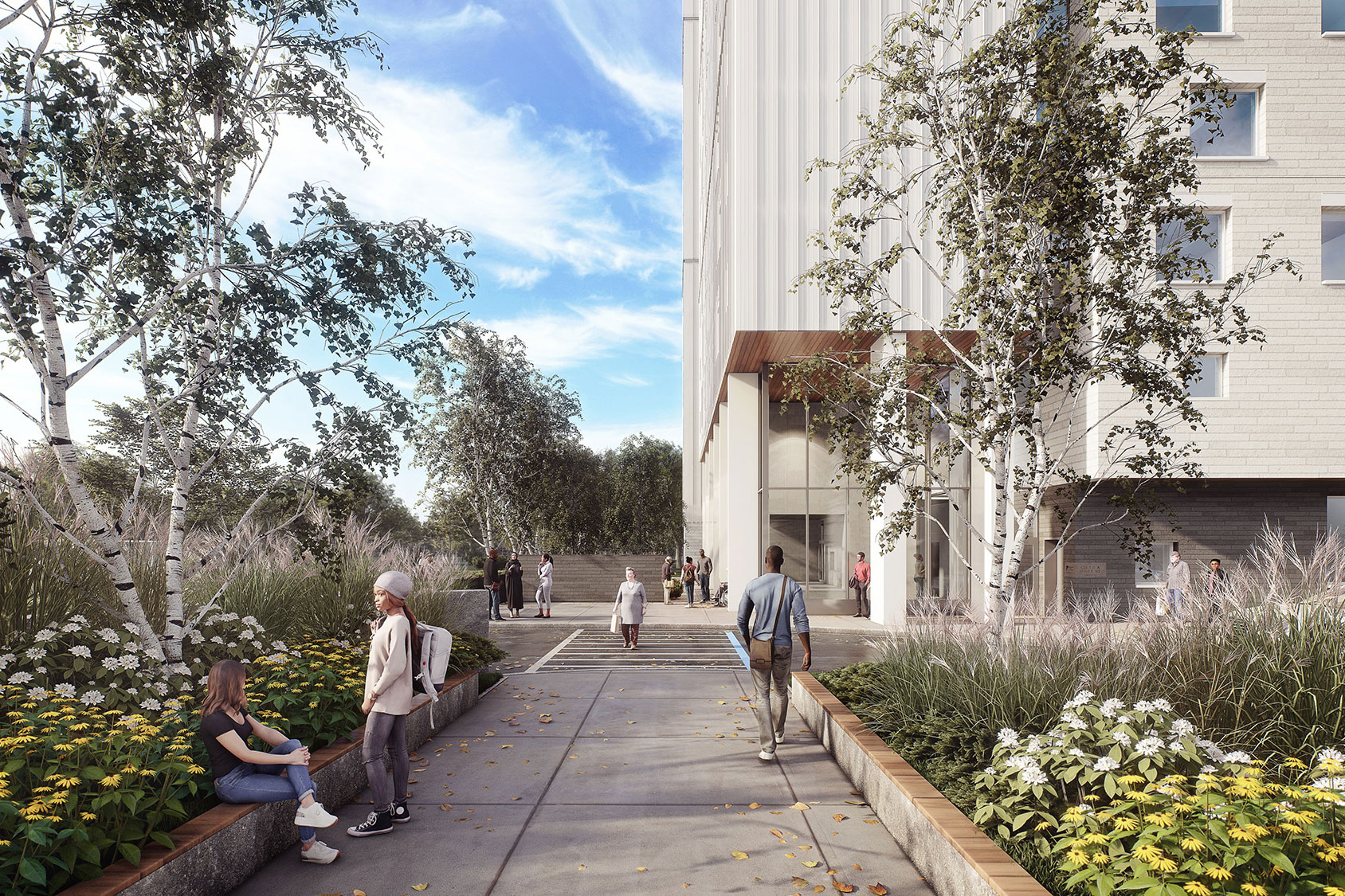Story at a glance:
- Montgomery Sisam Architects designs Chelsea Gardens as a model for high-quality, sustainable affordable housing.
- The cost of living many places in North America is on the rise, while demand exceeds development.
- The team had to be very efficient in terms of gross floor area and layout to deliver 200 units, including many larger family units.
In Canada the challenge of providing sufficient affordable housing is pressing. As the costs of living have increased, demand has outpaced development, and cities are seeing the fallout in their shelter systems. To redress this deficit, governments are pouring billions of dollars into new, multi-year housing programs. These programs, responding to climate action goals and incentives, are set to herald a new generation of high-performance affordable housing projects.
Montgomery Sisam Architects was enlisted by the Region of Peel in Toronto in 2019 to deliver Chelsea Gardens, one such project. As a practice we are passionate about positive city-building and have had the privilege of working with many agencies and organizations to create housing opportunities for the communities they serve. This new 20-story residence will bring 200 new affordable housing units to Brampton. It is one of more than three dozen projects aiming to advance the 10-year Peel Housing and Homelessness Plan. In addition to its social mandate, Chelsea Gardens is set to become a benchmark for sustainable affordable housing design.
The Region of Peel, like many municipalities today, has adopted aggressive climate change policies. These policies have become key drivers in the administration of all municipal assets, including housing. Chelsea Gardens had as its targets the Zero Carbon Design under the CAGBC’s Zero Carbon Building Standard Version 3, Net Zero Emissions pursuant to the Region’s Net Zero Emission Standard as well as the CMHC’s energy efficiency standards.
In addition to meeting these sustainability goals, this new multi-unit residential building needed to be affordable to build, affordable to operate, and provide high-quality living spaces for families.
Our challenge was delivering this high-quality, high-performance building with an economy of means.
How We Did It

Multipurpose room at Chelsea Gardens. Rendering courtesy of Montgomery Sisam Architects
An important first step was adapting our workflow and schedule to accommodate an in-depth pre-design study of the various pathways to achieve the given targets. Naturally each pathway would require a different design approach, from wall assemblies to energy systems, and each design approach had its own capital and operational cost implications. Some pathways were deconstructed, reconstructed, and re-costed and short-term investments were weighed over long-term gains. Once a viable balance was found between sustainability and affordability, we proceeded with the design.
Chelsea Gardens infills a small parcel of vacant land north of two existing 13-story towers.
To deliver 200 units, including many larger family units, on a constrained site meant that our team had to be very efficient in terms of gross floor area and by extension layout. We developed a plan with three structural bay sizes—a 25-foot bay suited to one-bedroom unit, a 31-foot central bay suited to two-bedroom units and core elements (three elevators and a scissor stair), and 36-foot bay suited to three-bedroom units. This produced, in turn, three slender bars for a more compelling building profile.
In addition to these slender bars, the building was staggered at levels 1, 2, and then again at levels 6 and 7 to create variation in its vertical expression. The pedestrian scale was particularly important in making connections between the new residence and the existing fabric, including a children’s play area and adjoining parkland.
Reinforcing these connections is an outdoor patio space that extends out from the community room towards the park creating a new social space for residents from across the complex. The patio space is part of a larger site design strategy that strives to enhance the existing pedestrian network and create stronger relationships between the building and neighboring amenities, including a community center, grocer, and local trail system.
Sustainable Goals

The building orientation was predetermined by the small undeveloped plot connected to the overall complex by an existing ring road that will also serve as the building’s main access route. To achieve the ambitious net zero goal, the effectiveness of the building envelope was paramount. An airtight, thermally resistant assembly was designed to help manage heating and cooling loads. Meeting these high thermal resistance values, however, imposed certain constraints in terms of massing, materials, and the amount of glazing. The different volumes were clad in a combination of aluminum standing seam and architectural masonry block with wood-look metal soffits visible from grade for added warmth and character.
Generosity of light and views was achieved in each unit despite the building’s conservative 18% window-to-wall ratio, thanks to oversized windows in each family room. Bedrooms were fitted with smaller windows that offer more privacy without restricting access to light. The variation also gives visual interest in the facade.
Finally, to heed the Region’s energy policies, Chelsea Gardens is served by a geothermal loop with distributed geothermal heat pump system. The geo-thermal system eliminates almost all of the building’s natural gas consumption and offers some cost certainty to the operator when it comes to heating and cooling.
Our work on Chelsea Garden reinforces our belief that good design isn’t just for those who can afford it. In the context of affordable housing, high-quality, high-performance living spaces can be achieved with an economy of means. The challenges and opportunities lie in negotiating these different priorities. This starts with setting clear targets and finding the right design approach. And it evolves through creative interpretation and careful design moves that prioritize the occupant experience.

Outside Chelsea Gardens. Rendering courtesy of Montgomery Sisam Architects






